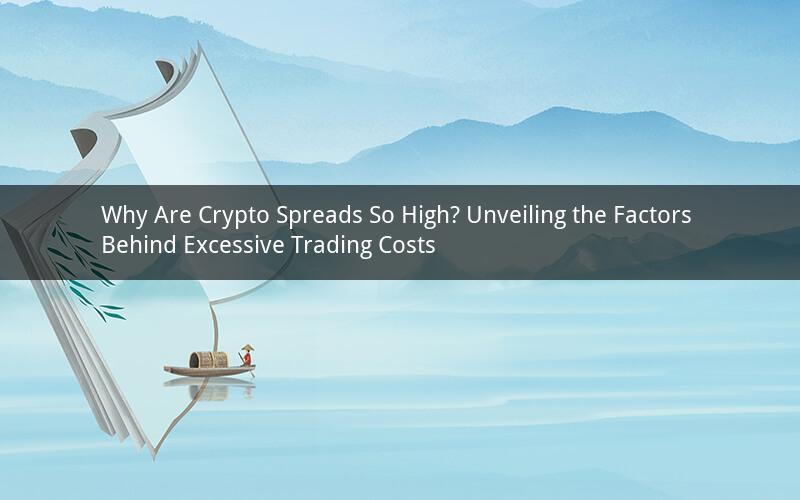
Introduction:
Cryptocurrency trading has gained immense popularity over the years, attracting both retail and institutional investors. However, one aspect that often puzzles traders is the high spreads observed in the crypto market. In this article, we will delve into the reasons behind these elevated spreads and shed light on the factors contributing to the increased trading costs.
1. Market Volatility:
One of the primary reasons for high crypto spreads is the inherent volatility of the market. Cryptocurrencies are known for their extreme price swings, which can lead to wider spreads. Traders and exchanges need to account for this volatility by widening the spreads to mitigate potential losses. Additionally, the lack of liquidity in certain cryptocurrencies can exacerbate the spreads further.
2. Lack of Liquidity:
Liquidity refers to the ease with which assets can be bought or sold without significantly affecting their price. The crypto market, especially for smaller or less popular cryptocurrencies, often lacks sufficient liquidity. When there are limited buyers and sellers, the spreads tend to widen as traders are willing to pay a higher price to enter or exit a position. This lack of liquidity is particularly evident during periods of high volatility.
3. High Market Impact:
Crypto spreads can also be influenced by market impact, which refers to the effect of a large order on the price of a cryptocurrency. When a large order is placed, it can cause a significant movement in the price, leading to wider spreads. Exchanges and trading platforms may widen the spreads to protect themselves from potential losses caused by market impact.
4. Regulatory Environment:
The regulatory landscape surrounding cryptocurrencies is still evolving, and this uncertainty can contribute to higher spreads. Exchanges and trading platforms need to comply with various regulations, which can add complexity and cost to their operations. To compensate for these costs, they may increase spreads, especially in regions with stringent regulatory frameworks.
5. Slippage and Execution Delays:
Slippage refers to the difference between the expected price of a trade and the price at which the trade is executed. In the crypto market, slippage can occur due to rapid price movements or limited liquidity. Exchanges may widen spreads to account for potential slippage and ensure that trades are executed at a favorable price.
6. Order Book Depth:
The depth of the order book, which represents the number of buy and sell orders at various price levels, plays a crucial role in determining spreads. A shallow order book can lead to wider spreads as there are fewer orders available to match buy and sell requests. This is particularly true for less popular cryptocurrencies with limited trading activity.
7. Market Manipulation and Speculation:
The crypto market is susceptible to market manipulation and speculation, which can cause significant price volatility and wider spreads. Manipulators may intentionally widen spreads to profit from the price movements of cryptocurrencies. Additionally, speculators may bid up prices, leading to wider spreads as they compete for limited liquidity.
Q1: How can traders mitigate the impact of high crypto spreads?
A1: Traders can mitigate the impact of high spreads by conducting thorough research to identify highly liquid cryptocurrencies with tighter spreads. They can also consider using limit orders instead of market orders to control the execution price and potentially reduce the spread.
Q2: Are high crypto spreads more prevalent in certain exchanges or trading platforms?
A2: High spreads can be observed across various exchanges and trading platforms. However, some platforms may have wider spreads due to factors like limited liquidity or higher transaction fees.
Q3: Can the introduction of new regulations help reduce crypto spreads?
A3: The introduction of new regulations can help reduce crypto spreads by providing clarity and stability to the market. However, the impact of regulations on spreads may vary depending on the specific regulatory framework and the level of compliance required.
Q4: Are there any strategies to exploit high crypto spreads?
A4: High crypto spreads can be exploited through arbitrage opportunities, where traders take advantage of price discrepancies between different exchanges. However, arbitrage opportunities may be fleeting and require quick execution.
Q5: Can technological advancements contribute to reducing crypto spreads?
A5: Technological advancements, such as improved order matching algorithms and increased market liquidity, can contribute to reducing crypto spreads. These advancements can enhance the efficiency of trading platforms and provide traders with better execution prices.